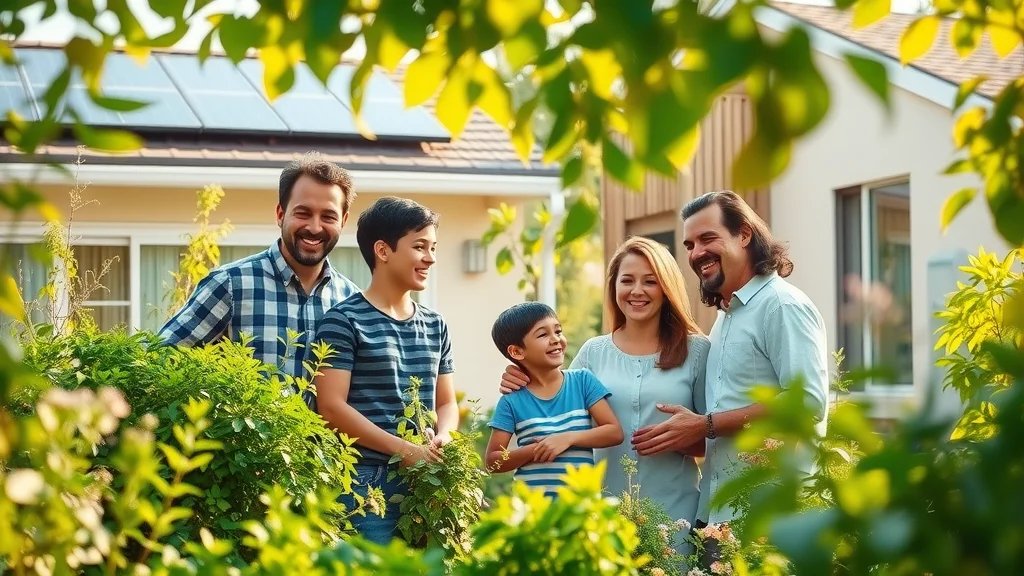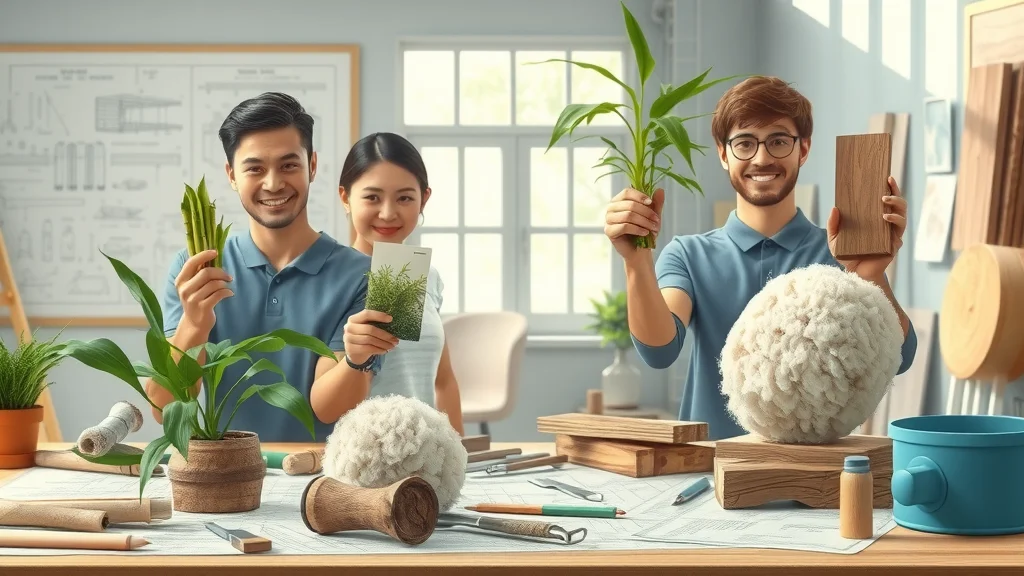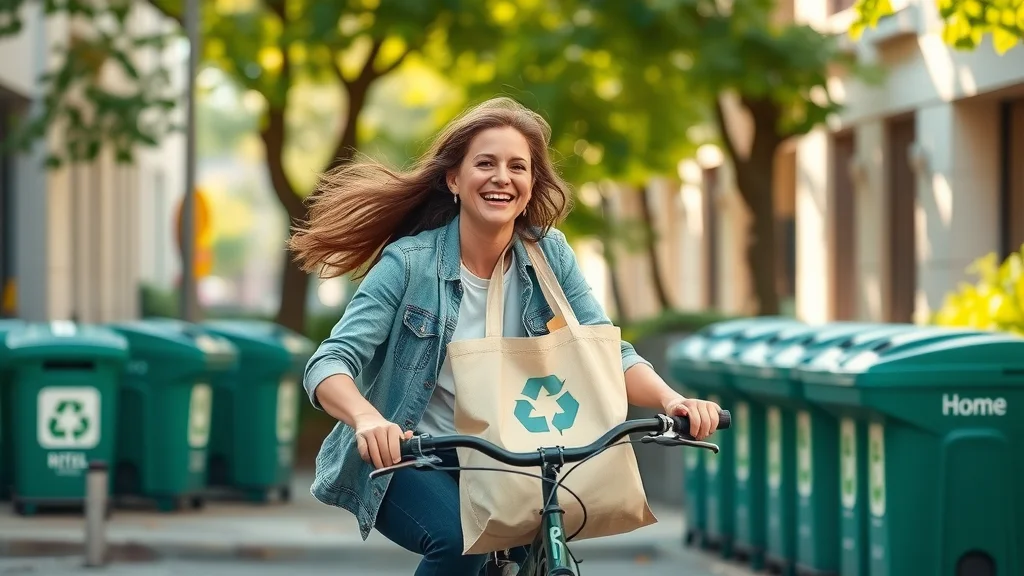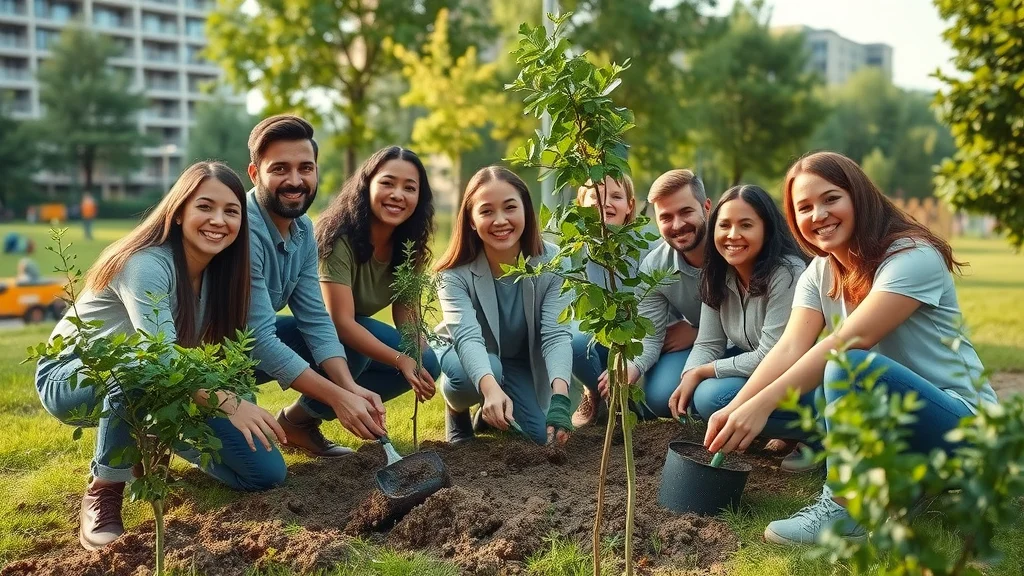Did you know? If we keep consuming as we do, by 2050 we’ll need the resources of almost three planets just to sustain ourselves. This isn’t science fiction—it’s a call to action. Sustainable living isn’t just a lifestyle trend; it’s our pathway to protecting earth’s precious natural resources and ensuring a better world for future generations. In this comprehensive guide, we’ll unravel practical ways you can transform your home into an eco-friendly haven. Get ready to discover easy wins, actionable tips, and essential knowledge for a truly sustainable lifestyle.
Startling Facts: Why Sustainable Living Matters for Every Home
Sustainable living is at the core of tackling some of the most pressing challenges of our time, including climate change, resource depletion, and mounting plastic waste. The average household creates significant environmental impact through daily choices—using fossil fuels, generating millions of tons of food waste, consuming gallons of water, and contributing to greenhouse gas emissions. The good news? Transitioning to sustainable practices at home can lower your carbon footprint, reduce reliance on fossil fuels, and save money in the long run.
By making mindful decisions about the products we buy, the appliances we use, and the way we manage waste, we actively reduce our environmental impact. For example, switching to LED lighting and choosing energy-efficient appliances immediately cuts down on energy consumption. Using reusable grocery bags helps eliminate hundreds of plastic bags each year per household. Every small decision, from how we shop at the grocery store to how we conserve water and energy, works together to make a measurable difference for both our wallets and the planet.
"If current consumption patterns continue, we will need the equivalent of almost three planets to support us by 2050." – United Nations Environment Programme

What You’ll Learn in This Sustainable Living Guide
Top-rated eco-friendly building materials and their benefits
12 actionable tips for creating a sustainable lifestyle at home
How to reduce your household carbon footprint and environmental impact
Understanding the sustainable development goals relevant to homeowners

Table: Comparing Eco-Friendly Materials for Sustainable Living
Material |
Environmental Impact |
Cost |
Durability |
Ease of Use |
|---|---|---|---|---|
Bamboo |
Low |
$$ |
High |
Easy |
Recycled Steel |
Low |
$$$ |
Very High |
Moderate |
Sheep’s Wool Insulation |
Low |
$$ |
Moderate |
Easy |
Reclaimed Wood |
Low/Moderate |
$$$ |
High |
Moderate |
21 Essential Practices for Sustainable Living at Home
Install solar panels for renewable energy
Insulate with eco-friendly materials
Utilize rainwater harvesting systems
Opt for low-VOC paints and finishes
Choose energy-efficient appliances
Switch to LED lighting
Compost organic waste
Grow native plants in your garden
Reduce, reuse, and recycle consistently
Use programmable thermostats
Buy locally sourced products
Opt for sustainable furniture made from bamboo or reclaimed wood
Implement water-saving fixtures
Embrace minimalism to reduce waste
Repurpose materials for home improvement
Support green-certified builders
Opt for natural cleaning products
Install smart meters for energy monitoring
Opt for permeable paving outdoors
Engage in community recycling initiatives
Offset carbon emissions through green programs
Spotlight: How to Live More Sustainably—Everyday Habits
Cultivating a sustainable lifestyle often starts with simple, daily shifts. Instead of viewing sustainable living as an overwhelming overhaul, begin by working small changes into your routine. Use reusable shopping bags and containers instead of plastic bags or bottles—this keeps unnecessary plastic waste out of landfills and saves natural resources. Choosing to walk, bike, or rely on public transport reduces personal carbon emissions and reliance on fossil fuels. Mindful water usage, like taking shorter showers or fixing leaks promptly, preserves gallons of water every month.
Buying in bulk can minimize single-use packaging, and opting for local produce cuts down on the environmental impact of long-distance shipping. Little habits add up: filling a reusable water bottle rather than buying single-use bottles, bringing your own containers to the grocery store, and practicing consistent, conscious consumption. These are straightforward actions that empower you to live more sustainably at your own pace.
For more inspiration on how sustainable design can be seamlessly integrated into real homes, take a look at how a Versailles apartment renovation merges eco-friendly practices with luxury architecture. This real-world example highlights the practical and aesthetic benefits of sustainable choices in home design.
Daily Techniques for Sustainable Living
Use reusable shopping bags and containers
Opt for public transport, biking, or walking
Practice mindful water usage
Buy in bulk to minimize packaging

"A successful sustainable lifestyle is built on small, everyday decisions." – Dr. Jane Roberts, Environmental Scientist
Reducing Your Carbon Footprint Through Sustainable Living
Every household plays a role in the fight against climate change. Calculating and monitoring your home’s carbon footprint gives you a baseline for improvement. Online tools can help you understand sources of greenhouse gas emissions from heating, electricity, transportation, water usage, and food waste. Adopting carpooling, using electric vehicles, or switching to green utility providers sharply cuts your dependency on fossil fuels. These actions not only help reduce carbon dioxide and greenhouse gas emissions but, over time, can save money by optimizing energy consumption.
Installing smart meters allows you to track energy and water use in real-time, making it easier to identify wasteful patterns. Opting for energy from renewable sources, such as solar or wind, further reduces your environmental impact. Even incremental changes, like replacing old appliances with high-efficiency models, adjusting your thermostat, or cutting back on single-use plastics, contribute meaningfully to a lower carbon footprint and a healthier home for everyone.
Calculate and monitor your home’s carbon footprint
Adopt carpooling or electric vehicles
Switch to green utility providers

Integrating Sustainable Development Goals (SDGs) at Home
Sustainable living goes hand-in-hand with the United Nations Sustainable Development Goals (SDGs). Individuals and households can drive significant progress in areas such as affordable and clean energy, responsible consumption and production, climate action, and clean water and sanitation. By choosing eco-friendly materials, reducing plastic waste, and conserving natural resources, every homeowner supports the global movement for sustainable development.
Setting home-based objectives that align with these SDGs promotes a broader impact. For instance, installing water-saving fixtures helps advance the clean water and sanitation goal. Buying local products and minimizing food waste support responsible consumption and production. Climate action gets a boost when you switch to renewable energy or offset your carbon emissions. Each conscious decision at home helps move society closer to achieving development goals for future generations.
Affordable and clean energy
Responsible consumption and production
Climate action
Clean water and sanitation

Eco-Friendly Materials: The Foundation of a Sustainable Lifestyle
Selecting the right materials is pivotal for creating a truly sustainable home. Eco-friendly materials like bamboo, recycled steel, sheep’s wool insulation, cork, and reclaimed wood offer impressive environmental benefits. These materials use fewer natural resources, generate less pollution during manufacture, and frequently outlast conventional options. Furthermore, they bring a unique, natural aesthetic to your home, supporting both sustainability and style.
Using these materials throughout your renovation or construction process doesn’t just reduce your environmental impact—it can also lower your carbon footprint and increase your home’s market value. Eco-friendly materials are often more durable and resilient, demanding less maintenance and providing superior insulation that helps save energy. Building with sustainability in mind is an investment not only in your home but in the environment that surrounds it.
Top Eco-Friendly Building Materials for Sustainable Living
Bamboo
Recycled steel
Sheep’s wool insulation
Cork
Reclaimed wood
Benefits of Using Sustainable Materials in Home Construction
Reduces overall carbon footprint
Minimizes environmental impact during manufacturing
Promotes healthy indoor air quality

Addressing Climate Change: Sustainable Living’s Role in Mitigation
The challenge of climate change is one that starts at home. By choosing renewable energy, prioritizing eco-friendly materials, and lowering energy and water consumption, each household can help slow the rise in global temperatures and reduce greenhouse gas emissions. Planting native trees, supporting community recycling initiatives, and minimizing food waste further aid in capturing carbon dioxide and preserving natural resources for generations to come.
Engaging in sustainable living practices provides a blueprint for broader societal change. Every conscious consumer choice reduces environmental impact, sets an important example within your community, and demonstrates that individuals collectively have the power to fight climate change. Homes designed for sustainability produce fewer carbon emissions and offer safer, healthier environments for everyone—proving that lasting solutions start right at our front door.

Practical Room-by-Room Sustainable Living Tips
Kitchen
Choose energy- and water-efficient appliances
Use glass and stainless steel instead of plastic
The kitchen is one of the most resource-intensive areas in any home, making it a prime spot for sustainable improvements. Upgrading to appliances that save water and energy not only contributes to lower utility bills but also significantly reduces your home's environmental impact. Switching from plastic food containers and water bottles to glass or stainless steel alternatives drastically cuts down on plastic waste. These simple changes make your kitchen both eco-friendly and healthier for your family, helping you live more sustainably every day.
Bedroom
Install natural fiber carpets and curtains
Avoid chemical air fresheners
Your bedroom should be a sanctuary from environmental toxins. Using natural fiber carpets and curtains minimizes exposure to harmful chemicals often found in synthetics. Replacing artificial air fresheners with options like essential oils or indoor plants helps maintain indoor air quality. Prioritizing these choices turns your bedroom into a healthier, more sustainable space without compromising on comfort.
Bathroom
Water-saving toilets and showerheads
Eco-friendly toiletries
Water conservation is critical, and the bathroom accounts for a significant portion of residential water usage. Installing low-flow toilets and showerheads saves gallons of water every day. Transitioning to eco-friendly toiletries, such as bamboo toothbrushes and biodegradable soap, reduces plastic waste and environmental impact, making your daily routine align better with a sustainable lifestyle.
Living Room
Upcycle furniture
Choose non-toxic paints
The living room often contains the largest items in your home. Opt for upcycled or second-hand furniture to support sustainable consumption and keep quality items out of landfills. Use non-toxic paints during renovations to protect both your family’s health and indoor air quality. These steps ensure your most social space supports sustainable living goals while maintaining comfort and style.

12 Steps to Make Your Sustainable Living Journey Easier
Conduct a home sustainability audit
Set measurable, achievable sustainability goals
Identify quick wins and low-cost upgrades
Involve all household members in planning
Set up visual reminders for new habits
Track your energy and water usage
Celebrate small improvements
Connect with local and online sustainable living communities
Attend sustainability-focused workshops
Invest in home improvement sustainably—one project at a time
Stay informed about sustainable products on the market
Share your progress to inspire others

People Also Ask: What is meant by sustainable living?
Sustainable living means adopting daily habits and choices that reduce your environmental impact and help preserve natural resources for future generations. It involves making conscious decisions about energy use, transportation, consumption, and waste, all aimed at maintaining ecological balance and supporting the planet’s health.
People Also Ask: What are the 7 Rs of sustainable living?
The 7 Rs of sustainable living are guiding principles to help minimize waste and promote responsible consumption: Reduce, Reuse, Recycle, Refuse, Repair, Repurpose, and Rot. By following these steps, we make the best use of available resources, keep valuable materials out of landfills, and move closer to a truly sustainable lifestyle.
People Also Ask: How to live in a sustainable lifestyle?
To live more sustainably, start by assessing your current habits and making gradual changes—like switching to eco-friendly materials, conserving water and energy, and minimizing food and plastic waste. Involve your family, track your progress, and stay informed about new practices and sustainable solutions. Consistency is key, and every small step adds up.
People Also Ask: What are the 4 types of sustainability?
The four types of sustainability are environmental, economic, social, and cultural. Environmental sustainability focuses on preserving natural resources and ecosystems; economic sustainability involves using resources efficiently to create long-term value; social sustainability emphasizes fair, healthy communities; and cultural sustainability protects and promotes diverse traditions and values.
A dynamic short video giving an immersive walkthrough of a modern eco-home, highlighting features like solar panels, green roofs, rainwater harvesting, energy-efficient appliances, reclaimed wood interiors, and lush native landscaping, all presented in a friendly, inviting style.
Explore actionable strategies and see real-life examples in this practical video guide to lowering your home’s carbon footprint—featuring renewable energy solutions, composting, and top tips for integrating sustainable living practices into everyday life.
Key Takeaways for Achieving a Sustainable Lifestyle
Sustainable living is achievable through small, consistent actions
Eco-friendly materials and practices are key to reducing your environmental impact
Align your lifestyle with sustainable development goals for greater impact
Frequently Asked Questions About Sustainable Living
What is the biggest challenge in adopting sustainable living at home?
One major challenge is overcoming the initial costs and breaking old habits. However, starting small and staying consistent makes the process manageable and rewarding over time.Are eco-friendly materials more expensive?
While some eco-friendly materials may have higher upfront costs, they often save money in the long run due to superior durability, energy efficiency, and lower maintenance needs.Can I switch to a sustainable lifestyle if I rent my home?
Absolutely. Renters can adopt many sustainable living practices, such as using reusable bags, conserving water, buying less plastic, and switching to energy-efficient light bulbs or appliances (with landlord approval).How do I get my family on board with sustainable changes?
Start by sharing the benefits, setting achievable goals together, and celebrating small successes. Make sustainable living a fun and collaborative journey for everyone in the household.What are some credible resources for sustainable living tips?
Explore government websites, local sustainability organizations, credible environmental groups, and university programs offering practical guides and trustworthy information.
Start Your Sustainable Living Journey Today
Transforming your home with sustainable living practices is possible, practical, and powerful. Start small, build momentum, and become a source of positive change for your family and your community.
If you’re inspired to take your sustainable living journey even further, consider exploring how eco-friendly design is shaping the homes of notable figures. Discover how Brad Pitt’s modern Los Feliz home incorporates advanced green building techniques and innovative materials for a truly future-forward lifestyle. By learning from these pioneering examples, you can find new ideas to elevate your own home’s sustainability, blending comfort, style, and environmental responsibility. Let your next step be guided by the latest in sustainable design, and continue building a home that’s as good for the planet as it is for you.
 Add Row
Add Row  Add
Add 



Write A Comment